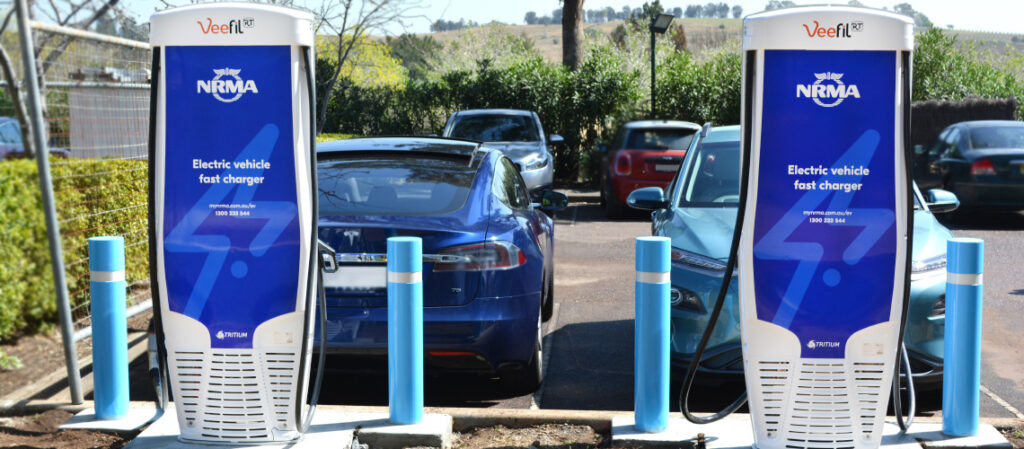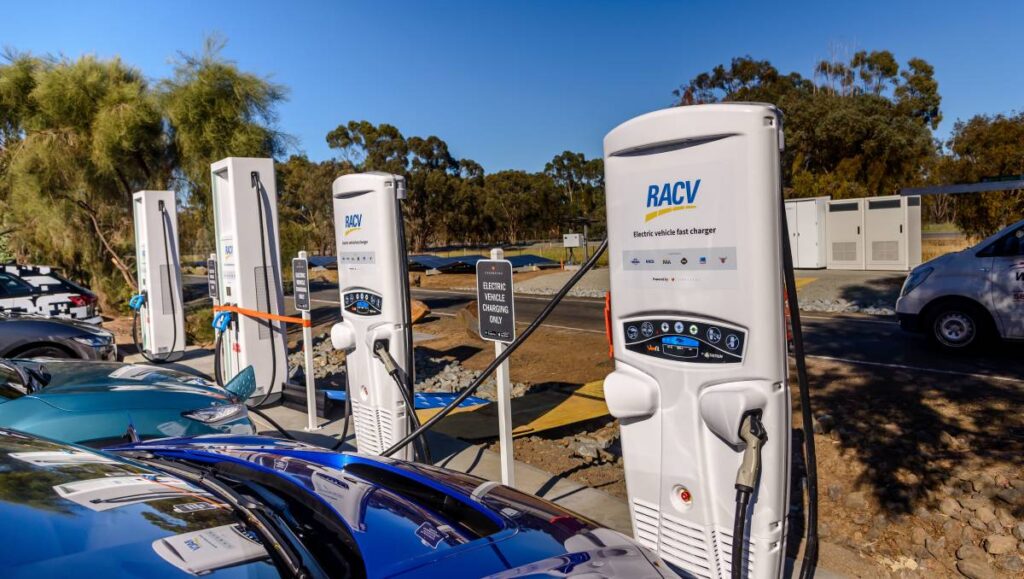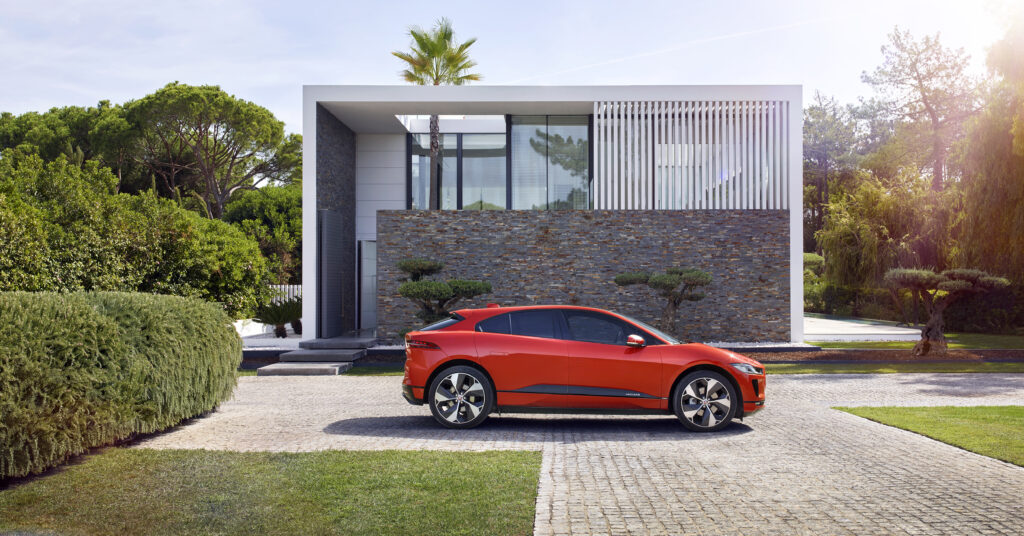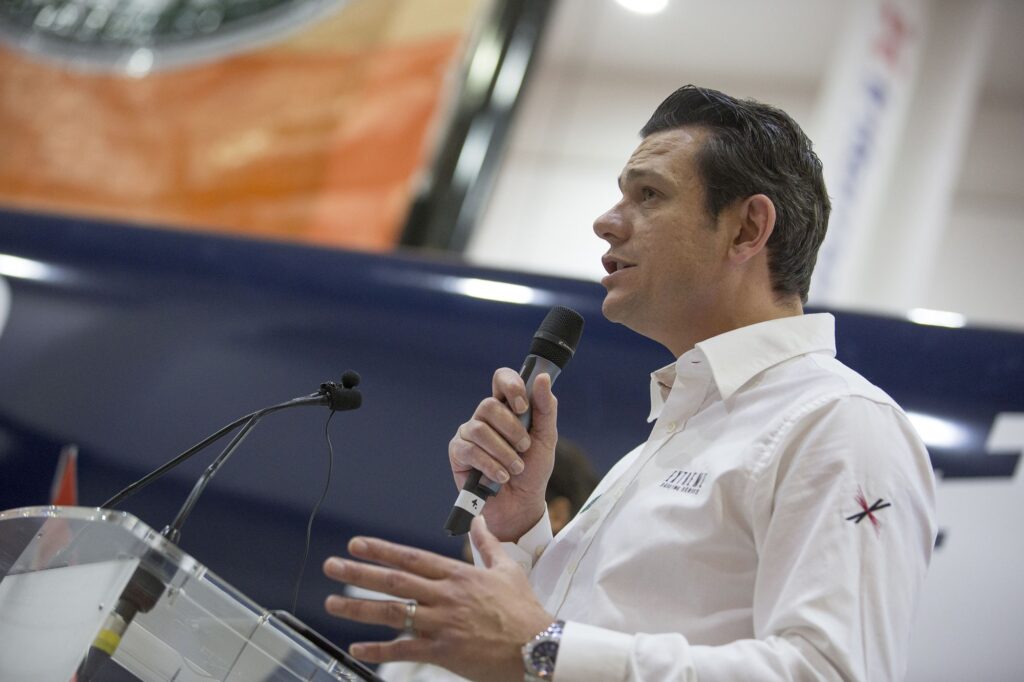Rapid charging infrastructure breathing new life into EV motoring
- PostedPublished 1 December 2018

The 50th public electric vehicle fast-charging point – Tesla superchargers aside – has just been installed in Australia, marking a landmark in the ongoing development of electric mobility in this country.
It is the fourth fast-charger to be installed by NRMA as part of its $10 million investment to deploy at least 40 chargers, in doing so doubling the size of the existing public charging network in NSW and ACT in an effort to aid businesses and consumers that intend to adopt electric vehicles.
The availability of charging points is one of the key considerations for many when it comes to electric car ownership. While some may be able to charge their cars at home or work, there are countless others – such as those in high-density suburbs – who do not have off-street or allocated parking that can be reached by a charging cable.
Consequently, countless private owners considering EVs would have to rely on these publicly accessible charging points. If there is no charging point within easy reach, then a potential EV customer may be forced to instead opt for a vehicle with hybrid or combustion drivetrain.
“It’s been proven time and time again across the globe that when the charging infrastructure is in place for electric vehicles, you’ll see an uptick in the number of EVs on the road and in showrooms,” said Chris Hewitt, head of sales at Australian charger and electric mobility company Tritium.
“We now have a significant number of publicly available chargers across the country with more to come.”
The 50th charging point (pictured above) was installed in Hunter Valley Gardens, Pokolbin – about 120km north of Sydney – is one of Tritium’s Veefil-RT 50kW DC fast chargers. These, which support EVs with CHAdeMO or CCS2 sockets, can fast-charge conventional EVs such as the Nissan Leaf to around 80 per cent within just 30 minutes.
“While hitting this milestone is a great achievement, the country still has a long way to go with the need for hundreds of new DC charging locations,” said Hewitt.
“Federal Government support and incentives would certainly help further drive electric vehicle penetration into the Australian market, but industry and local governments across Australia aren’t prepared to wait for it.”
Tritium and the NRMA aren’t the only ones looking to significantly expand Australia’s charging network. Chargefox, a start-up based in Melbourne, has raised $15 million to begin building a network of “ultra-rapid” chargers. A total of 21 locations are planned, with the first being in Euroa and Barnawartha North, Victoria. They will be publicly accessible and support vehicles with CCS2 or CHAdeMO socket types.

Unlike Tritium’s 50kW Veefil-RT chargers, Chargefox’s ultra-fast units pump between 150 and 300kW. For comparison, even Tesla’s much-admired albeit older “Superchargers” supply up to 120kW. This means that when connected to a suitable EV, the Chargefox station can recharge a battery quickly enough to grant up to 400km of range in just 15 minutes.
“Chargefox is committed to sustainable mobility,” said Marty Andrews, CEO of Chargefox. “Our network of ultra-rapid charging stations will play a significant part in improving the infrastructure of this country – and enable all modern EV drivers to confidently drive between Australia’s major cities.”
The cost of charging has yet to be announced but anyone with the Chargefox app, available for both Android and Apple phones, will be able to access the chargers – and the app will also show where other charging locations are available.
Chargefox is further keen to point out that each of its charging points will be open for long hours, or 24/7 if possible, and located in safe environments; for example, each will be well lit and often located by a cafe or at a servo.
More prominently, as a further environmental benefit, Chargefox claims that all of its charging points will be entirely powered by renewable energy. Many will benefit further from on-site solar panels and battery-equipped storage facilities, reducing the load on the grid.
Funding for such a wide-ranging expansion, which will see chargers installed around Perth, Adelaide, Melbourne, Sydney and Brisbane, has come from several sources – including the NRMA and other mobility companies, including the Australian Renewable Energy Agency (ARENA) and the founder of Carsales.com.au, Greg Roebuck.
The Victorian Government has also backed Chargefox with a $1 million grant, which has been used to install multiple charging points at the recently opened Euroa and Barnawartha locations. The Andrews Labor Government has also announced another $2 million to support the ongoing deployment of charging points, with stations planned for Melbourne, Ballarat, Horsham, Torquay and Traralgon.
Lily d’Ambrosio, Victoria’s minister for energy, environment and climate change, said: “Uptake of electric vehicles will help us reduce emissions and to tackle climate change. More Victorians will be driving electric vehicles in the future, which is why we’re building the infrastructure to be ready to meet this demand.”

Manufacturers are also keen to see charging networks expand. “The more infrastructure we see being put into place, the more we’re encouraged to introduce new electric vehicles into the Australian market,” said Hyundai Motor Company Australia CEO Scott Grant.
The increasing availability of electric cars and plug-in hybrids, such as the recently launched all-electric Hyundai Ioniq and upcoming Kia eNiro, is serving to drive down prices and make EV motoring more feasible for a wider range of customers.
As a result, they are now beginning to appear on many a business fleet manager’s radars – as the difference between the total cost of running a hybrid or electric vehicle and a conventional car is now getting smaller. Provided the infrastructure is in place, this too will serve to further popularise electric motoring.
A similar conclusion has been drawn in a report published by ARENA and the Clean Energy Finance Corporation (CEFC), which states that EVs will cost around the same as conventional petrol cars by the mid-2020s.
“Electrification of Australia’s transport sector could reduce emissions and dramatically change how we use electricity,” said ARENA CEO Darren Miller.
“EV charging networks are being rolled out in other countries, and Australia needs to catch up to ensure that we can experience the same benefits of improved driving experience, lower operating costs, and better environmental outcomes that electric vehicles offer.”
Australia must amp up: Jaguar Land Rover
Jaguar Land Rover Australia managing director Mark Cameron has warned that Australia could miss out on becoming a leader in electric car technology.
In an interview published by the Sydney Morning Herald, Cameron said: “Electric vehicles are a great economic opportunity for Australia to showcase its natural resources and its ability to be a leader in this space; it’s an area that the government needs have a look at.”

This opportunity is primarily being stifled by the lack of incentives for buying or using electric cars – which, in conjunction with their high list prices, frequently makes them unattainable. Then there are issues such as range and the availability of charging points, which make electric vehicle (EV) motoring unfeasible for many.
Not speeding up the move towards electric vehicles, however, threatens the opportunity for Australian companies to capitalise on related development and infrastructure.
Australian charger specialist Tritium, for example, has struck a deal in Europe to roll out as many as 600 chargers. Yet, in Australia, the 50th fast-charging point has only just been opened.

There are also avenues such as the production of EVs themselves, thanks to Australia’s substantial natural resources of key materials such as nickel and lithium – and, additionally, data services to manage the charging networks and vehicle information. All in, there are several highly profitable markets that could be exploited if the government moves quickly.
Furthermore, given renewable energy technology, Australia could reduce its dependency on conventional fuel stocks. “The challenge is going to be for volume manufacturers to bring their cars in volume and that’s where you need larger government support,” said Cameron.

A rapid transition to electric cars, however, is not without its hurdles. South Australia Senator Tim Storer, speaking at the Australia Institute Revenue Summit, highlighted how tax earnings on fuel have fallen from 1.5 per cent of GDP to just over one per cent – and are likely to fall further as EV adoption spreads.
Storer said: “Why should the owner of a $200,000 Tesla pay nothing to drive on our roads, subsidised in effect by owners of Holdens and Fords.”
Consequently, Stoner has established a committee to prepare a report on the changing automotive landscape and its further impact. In particular, it’s suggested that a road user charge should be introduced – so, at the very least, the cost of road development and maintenance is fairly spread among all those who use them.
- CategoriesIn SightGlass
- Tagscharging, electric vehicles, EV, ev charging, SightGlass News Issue 15


